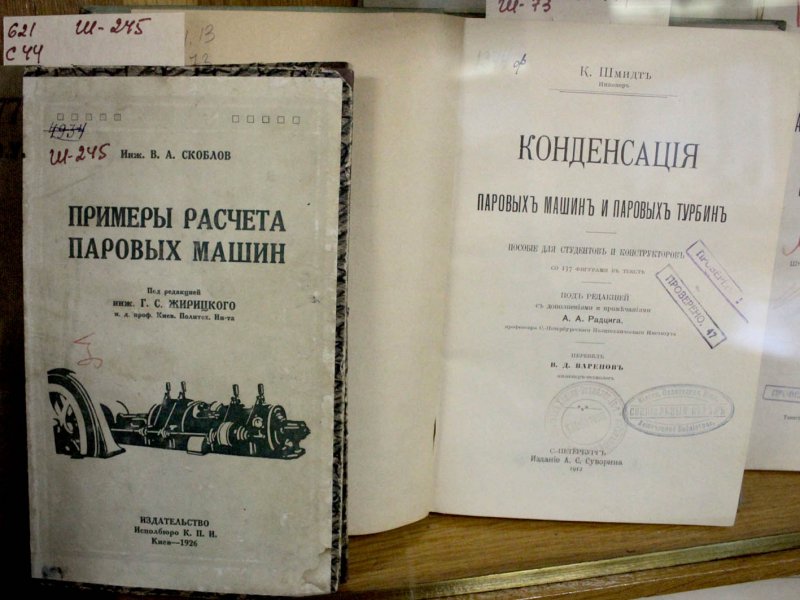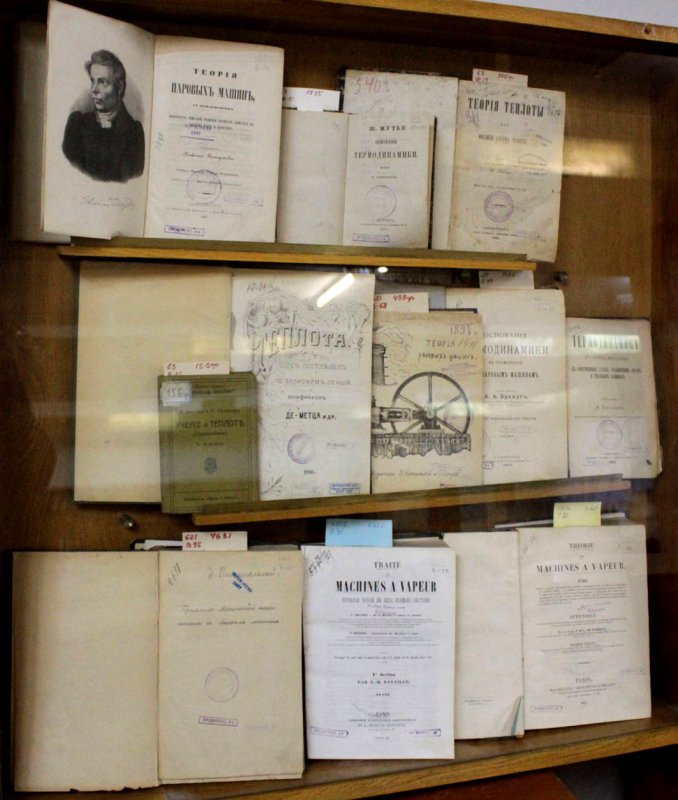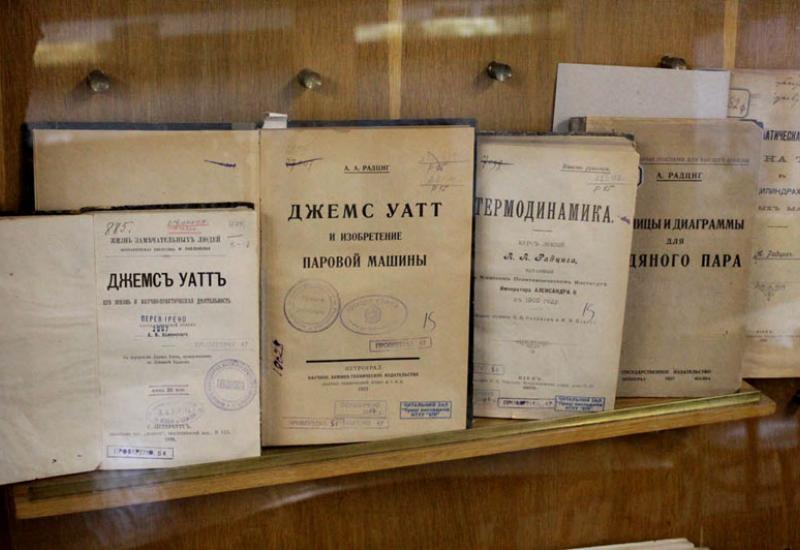A steam engine is an engine in which the chemical energy of fuel is converted into the mechanical energy through the use of steam, which is formed when water is heated. The creation and widespread use of the steam engine became one of the main factors of the industrial revolution, which began in England in the second half of the 18th century, and, as a result, spread to other countries. In the 19th century steam engines became the main engines for industrial enterprises and transport (railways and steamers). At the beginning of the XIX century there were only several hundreds of steam engines in the world but at the end of it about two millions. It is not surprising that this century was called the "age of the steam."
The universal steam engine, the advanced "descendants" of which became the basis of the "age of the steam", was created by the Scottish man James Watt. In 2019, 250 years passed since he received a patent for his steam engine, more precisely, for "ways to reduce the consumption of steam and, as a result, complete in fire engines."
By this date, in the room of rare and valuable documents of the Scientific and Technical Library named after G.I. Denysenko was launched an exhibition "Towards the History of Steam Machines", which presents books from the library's collections.
At the end of the XIX century in Ukraine, which was then part of the Russian Empire, various steam engines were used and produced. Founded in 1898, the Kiev Polytechnic Institute trained mechanical engineers who were specialists in the design and use of steam engines, boilers, steam locomotives, and other heat engineering equipment. From the first year of the KPI's foundation, special courses were taught here: at the mechanical department - "Thermodynamics and Thermal Machines" and "Steam Boilers"; at engineering - "Thermodynamics, thermal machines and steam locomotives"; at chemical - "Steam engines and hydraulic engines" and "Steam boilers". Our library has many print publications that students have used to study these courses.
First of all, there is a publication on thermodynamics - science, the creation and development of which were closely related to the development of thermal (steam) machines. For example, The Foundations of Thermodynamics as Applied to Steam Engines (1900) by Alexander Andreevich Brandt, a well-known Petersburg professor of several higher technical schools, an outstanding scientist in the field of applied mechanics and thermodynamics. Another classic textbook on thermodynamics that our students used was “Thermodynamics with applications to perfect gases, saturated vapors and heat engines” (1894) by Alexey Ivanovich Pogodin, a teacher at the Moscow Technical School. There is also one of the first textbooks in world literature in thermodynamics "Thermostatics.The first part of the mechanical theory of heat" (1871) by Mikhail Fedorovich Okatov, professor at St. Petersburg University.
Foreign authors, translated into Russian, are represented by the works of J. Moutier such as «Foundations of Thermodynamics» (1875) and «The Theory of Heat from Physics of Daguin» (1861) of Pierre Adolf Dagen (1814-1884), who was a professor of physics at the University of Toulouse and director of the local observatory.
Among the old ones dedicated to steam engines, we still have the "Fulton internal communications system, translated by the Forwarder of the Department of Water Communications Titular Counselor Petryaev", 1805, Robert Fulton (1765–1815) who was an American engineer and inventor, creator of one of the first steamboats and a project creator of the first submarine.
It is worth mentioning the unique publication "Theory of steam engines, with the application of a detailed description of a double-acting machine according to the Watt and Bolton system - an essay by Nikolai Bozheryanov", 1849, Mikola Mikolayovich Bozheryanov (1811–1876) - Russian scientist of the 19th century in the field of ship steam engines, a ship mechanical engineer, a member of the Marine Scientific Committee, a class inspector and the first teacher of a new discipline for Russia, which was known as steam mechanics, in the Marine Engineering School and in the classes of the Marine Corps.

In 1842 he wrote the book "Description of the invention and the gradual improvement of steam engines", and in 1849 - the second part of the book, "Theory of steam engines ..." that was published separately.
The book was highly appreciated by scientists E.H. Lenz and B.S. Jacobi and was awarded with the half of Demidov Prize. This publication is part of a private collection donated to our library by a teacher of descriptive geometry Isidor Grigorievich Rekashevim.
A significant part took place practical manuals and reference books on steam engines: "Practical instruction for handling steam engines: a manual book for machine keepers, manufacturers, breeders and winemakers" (1852); "Care for steam engines" by A. Hans (1870); "The driver’s satellite: a guide to the knowledge, selection and installation of steam engines, boilers, drives and care for them: for stokers, machinists, mechanics, engineers, technologists, breeders, manufacturers, technical institutions and schools" (1875) of German authors Wilhelmson and E. Schell. A great impact has also the book “Sick steam engine and first aid in accidents with it.A practical guide for care and supervision of a steam engine” by Hermann Heder (1902). There are many reprints of this practical guide. All mentioned publications are translations from German.
Also, the exhibition presents numerous works by teachers of the Kiev Polytechnic from the first half of the twentieth century. In particular, "Thermodynamics: a course of lectures" by Oleksandr Oleksandrovich Radzig published in 1900 in Kiev. O.O. Radzig (1869-1941) was a physicist, engineer, specialist in the field of heat power engineering and applied mechanics, a talented teacher, professor at the Kiev Polytechnic and St. Petersburg Technological Institute, the author of numerous works on thermodynamics, heat engineering and several works on the history of science and technology. Also, Alexander Radzig was among the founders of the Department of Applied Mechanics in the mechanical department of KPI. The scientist's contribution to the training of qualified engineering personnel was enormous: on his initiative in 1902, an educational and scientific laboratory for steam engines was created on the basis of the KPI thermal power station; under his guidance students had lectures on thermodynamics, applied mechanics, steam engines, hydraulics and hydraulic technical devices. The Report on the Institute’s activities for 1901 contains the record “Professor O. O. Radzig read thermodynamics and steam engines for third-year students in the mechanical department and supervised the exercises in this subject. In addition, he read a special shortened course in the same subjects for students of the chemical and engineering departments. He supervised the design of steam engines in the IV year of the mechanical department "[Report on the status of the Kiev Polytechnic Institute of Emperor Alexander II for 1901. - Kiev: Printing house S.V. Kulzhenko, 1903].
In addition to "Thermodynamics", the exhibition presents other works of O.O. Radzig, among which was "James Watt and the invention of the steam engine" (1924), "The course of steam turbines" (1926), "Tables and diagrams for water vapor" (1923).
A special edition is the Mathematical Theory of Heat Exchange in the Cylinders of Steam Engines (1904). Firstly, this is the dissertation by O. Radzig, which he defended at the Kiev Polytechnic in 1905. Secondly, it was donated to I.D. Zhukov (director of the KPI 1911-1917, an outstanding chemist, professor of the department of chemical technology), as evidenced there is a dedicatory inscription: "To the esteemed Ivan Diomidovich Zhukov from the author."
Another teacher whose work is presented at the exhibition is Petro Feofanovich Erchenko (1868-1927). He was a professor, head of the department of fibrous substances, dean of mechanical and engineering departments, rector of the KPI from 1917 to 1919. Since 1901, the scientist gave lectures on heating and ventilation of industrial and civil structures. In 1909-1910 these lectures were published in the form of a two-volume “Heating and Ventilation” - “Thermokinetics and Furnaces” (part 1) and “Central heating systems” (part 2).

In 1899, Alexei Yakovlevich Stupin (1869-1928) began teaching at the Kiev Polytechnic. He was a mechanical engineer, a specialist in steam boilers, founder and long-term head of the steam boiler department, professor of the KPI, dean of the mechanical department, and rector of the institute in 1919-1920. Alexei Yakovlevich dedicated almost 30 years of his life to scientific and educational activities at the Kiev Polytechnic, but only a few of his works were saved in the library. Two publications are presented at the exhibition: "Devices for the artificial circulation of water in steam boilers" (1905, the dissertation, for which the author earned a Ph.D.) and "A course of lectures on boiler care.Fittings and headsets, read by A. I Stupin at the Kiev courses in 1924". The last work is a typewritten text and a unique example of textbooks compiled on the basis of a lecture listened to and recorded by the teacher. Our fund stores a lot of scientific works and textbooks of the department’s teachers of heat engineering, created in 1922. The first head of the department was Professor Trofim Trofimovich Usenko (1881), whose fate was tragic: he was repressed in the early 30s of last century.
The exhibition presents one of the works of a scientist - "The test of steam boilers/written by engineer Trofim Usenko" with a respectful inscription on the title page, by which it is possible to identify the date of writing the work: "To the office of thermal power plants from the author 1/24".
A member of the department of thermal engineering Emanuel Illich Romm (1900-1951) worked as a research engineer - KPI graduate, a future outstanding scientist, twice winner of the USSR State Prize, professor of the Moscow Energy Institute. Among his works is "Calculations of steam boilers" (1927), edited by T.T. Usenko.
Another name is also well known in our institute: Heorhiy Serhiyovych Zhyrytsky (1893–1966) - the professor, the Head of the Department of Steam Engine and Dean of the Faculty of Mechanical Engineering, the author of numerous educational and practical manuals, which have been reprinted many times during the 20-30s of the last century. We present two of them: "Steam Machines" (1928) and "Steam Turbines" (1934), where the scientist acted as editor-in-chief.
Most of the editions presented at the exhibition are educational and practical manuals, directories, professional technical journals of the late XIX - the first half of the XX century. All of them are preserved in the library fund, reflect an important period of development of domestic heat engineering, and can clearly illustrate interesting pages of the history of Kyiv Polytechnic Institute.
We invite teachers and students of heat power engineering to see our specially prepared this-year exhibition, and if you wish - to hear the excursion.

